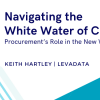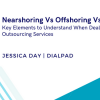Over the last two decades I have had the opportunity to work with some of the largest (as well as mid-sized) enterprises who had outsourced their IT work to offshore based teams. The offshore teams themselves were either part of service providers who were domestic companies out of North America/Europe, or part of providers who were headquartered out of India (with largely a sales presence in North America/Europe). This coupled with the experience of working in service provider organisations of both types, gave me some good insights into how the relationship elements worked in such a construct.
With the work largely being delivered from offshore, not only did clients have to work with teams which were remote, but also deal with teams with different cultures, management styles and communication styles across different time zones. While there was usually a lean onshore presence that the service providers maintained, the onshore teams internally were dependent on the offshore teams and their leadership for much of the heavy lifting to be done. These challenges of working with remote teams that the enterprises faced were accentuated for enterprises who were either first- or second-generation outsourcers.
In an offshore leveraged delivery the whole mechanics of getting work done, reaching out for help, appreciating, directing, challenging and guiding by the enterprise are very different than when work is done in-house or outsourced to onshore teams. The management of work should be done in such a manner that it reaches the people who can make a difference and it should be understood by those who can make a difference. Very often clients go by the first version of the governance playbook that the service provider has slammed on their desk and reach out to the teams onshore but are disappointed not to see the desired results and action promptly. The cause is often because the context and content is lost by the time it reaches the offshore teams delivering the services (and that is assuming the feedback does reach the offshore team).
In all this the role of the offshore delivery leader is often most underestimated. Given the nature of service providers’ governance models, the onshore account owner is the point person for the client and the offshore delivery leader in most cases is kept low profile and out of limits of the client. Very often the offshore delivery leader knows just too much and without the proper “modulation” that an onshore account owner provides, s/he may do more harm than good for the service provider. Further, it always helps the provider not to expose the delivery leaders at offshore to the client lest the client starts directly interacting with them. This can not only lead to some anxious moments for the service provider, but will also dilute the role of the onshore account owner (and they are acutely aware of this).
There are few other reasons why the role of the offshore delivery leader is crucial. Apart from the fact that this person is leading the delivery floor where bulk of the work is getting delivered from, they are also generally better connected to the larger delivery organisation and more influential there than the onshore account owner who is generally aligned to the industry vertical with P&L responsibilities.
A good connect with the offshore delivery leader also insulates the enterprise with any changes with the onshore account teams. It is unlikely that both onshore and offshore leadership will change at the same time - and it should not be allowed for the success of the programme.
In addition to these facts, the offshore delivery leader is the single person in the overall service provider’s organisation who has the direct pulse of the client’s engagement, has resources under his direction and is most importantly empowered operationally and politically to make decisions. A strong rapport and connect with this individual is that elusive X-factor which can make offshore based deliveries successful.
An enterprise either embarking on a new programme that will have offshore delivery or with an existing offshore leveraged programme, should consider engaging with the offshore delivery leader directly.
- If there’s an opportunity during the contracting process, it is highly recommended that the enterprise should ask to interview the proposed offshore delivery leader and insist on having them on the account for at least two years to ensure continuity. This role should also be plugged into the planned governance that is baked for the account at the start of the programme.
- If there’s an existing programme, the enterprise may usually not be able to influence the contract changes on this count but should look at actively engaging with the offshore delivery leader in the regular governance meetings. This may mean that most such the schedule of such existing meetings may need to be revised to factor in the time-zone differences but that would be well worth the effort.
It also helps if the enterprise can prevail to have this person visit onshore for an extended period of few weeks annually to ensure that s/he is connected to their organisation and have the required insights to drive a successful delivery.
The above hinges on an assumption that the enterprise is fairly to highly involved through its retained organisation in operationally engaging with the service provider. If the level of the engagement is very low currently, this may also be a good way to initiate improvements in the governance model.








